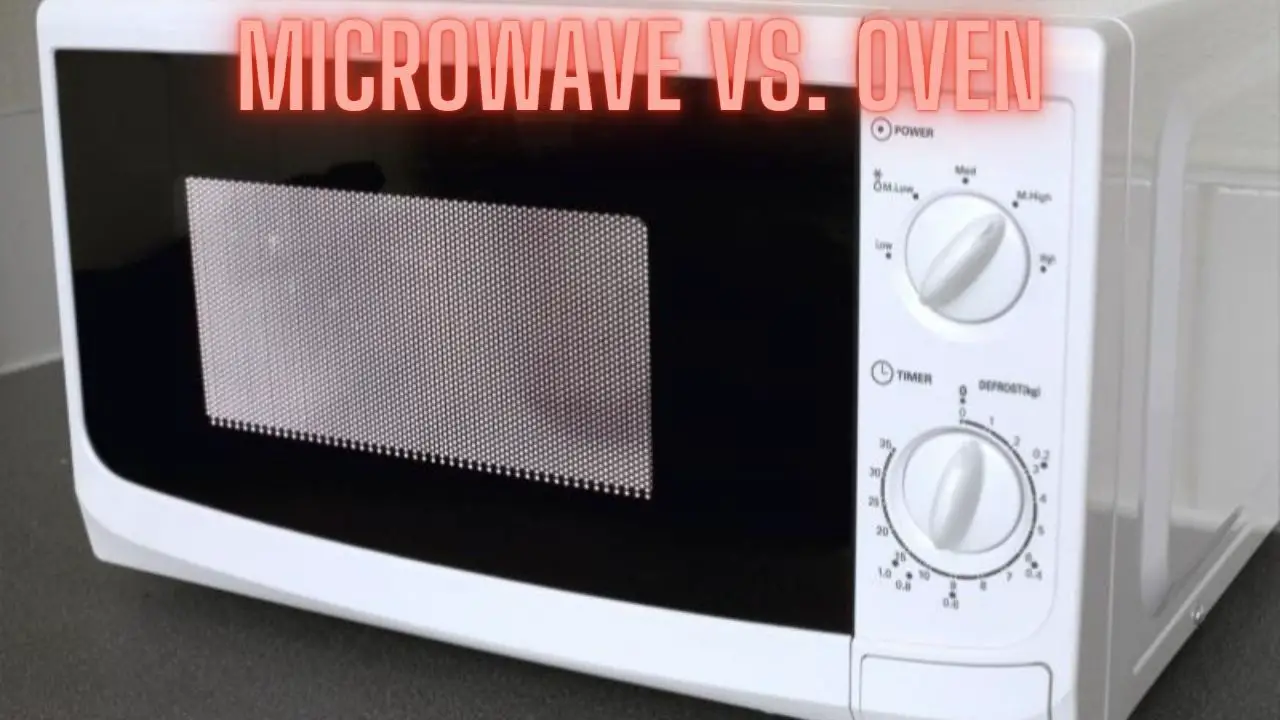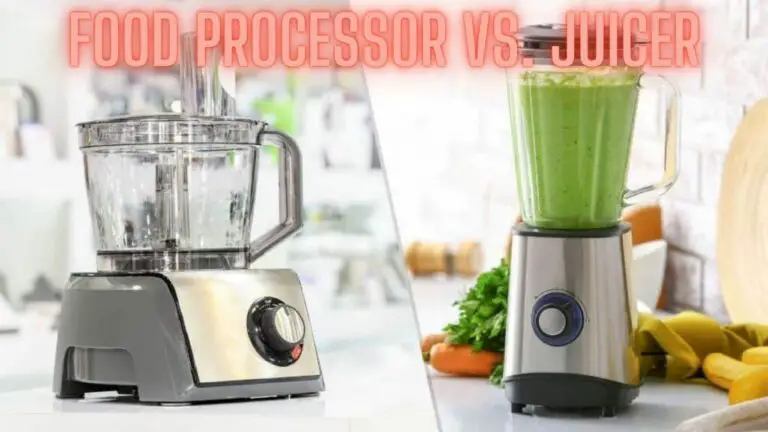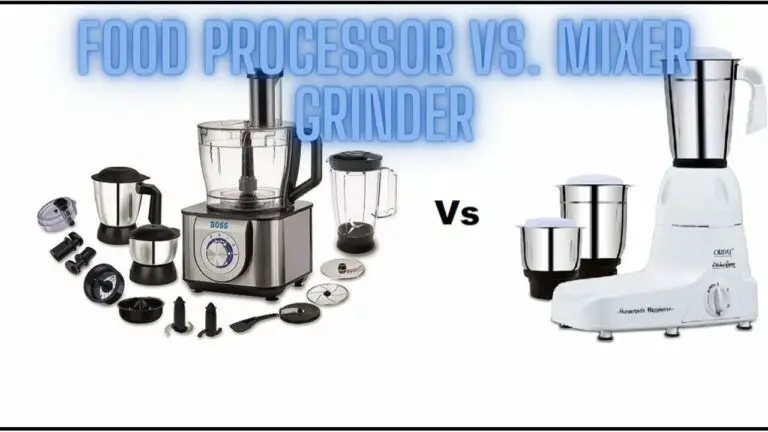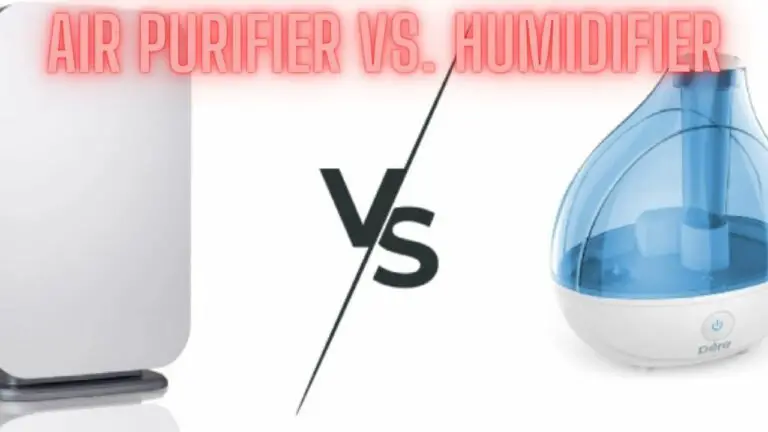Microwave vs. Oven: Exploring Cooking Appliances for Your Kitchen
1. Introduction
Microwave ovens and conventional ovens are two common appliances found in kitchens around the world, each offering unique advantages and capabilities for cooking and food preparation. This introduction sets the stage for comparing these two types of ovens, outlining the purpose of the comparison and providing a brief overview of microwave ovens and conventional ovens.
- Purpose of the Comparison:
- The purpose of this comparison is to explore the differences between microwave ovens and conventional ovens, highlighting their respective features, cooking mechanisms, performance, energy efficiency, cost considerations, and suitability for different cooking tasks. By examining these factors, readers can make informed decisions when choosing between these two types of ovens for their culinary needs.
- Brief Overview of Microwave Ovens and Conventional Ovens:
- Microwave ovens, also known as microwaves, utilize microwave radiation to cook or heat food quickly and efficiently. They work by emitting microwaves that penetrate the food, causing water molecules to vibrate and generate heat. Microwave ovens are prized for their speed, convenience, and versatility in reheating, defrosting, and cooking a wide range of dishes.
- Conventional ovens, on the other hand, use radiant heat from heating elements located at the top and bottom of the oven cavity to cook food. They rely on the circulation of hot air within the oven to evenly cook and brown food. Conventional ovens offer precise temperature control and are well-suited for baking, roasting, and broiling a variety of dishes, producing crispy crusts, golden-brown surfaces, and tender interiors.
In the following sections, we will delve deeper into the differences between microwave ovens and conventional ovens, examining their cooking mechanisms, performance, energy efficiency, cost considerations, kitchen space requirements, maintenance needs, and cooking preferences. By the end of this comparison, readers will gain a comprehensive understanding of these two types of ovens and their suitability for various cooking scenarios.
Cooking Mechanism
Microwave ovens and conventional ovens employ different cooking mechanisms, resulting in distinct cooking processes and outcomes. Understanding these mechanisms is crucial for evaluating their performance and suitability for different cooking tasks.
- Microwave Ovens: How They Work
- Microwave ovens utilize microwave radiation to cook or heat food quickly and efficiently. These appliances generate microwaves, which are a form of electromagnetic radiation, through a magnetron located inside the oven. The microwaves are then directed into the oven cavity, where they penetrate the food and cause water molecules within the food to vibrate rapidly. This vibration generates heat, which cooks the food from the inside out.
- Key Points:
- Rapid Heating: Microwave ovens cook food much faster than conventional ovens due to the direct transfer of energy to the water molecules in the food.
- Even Heating: Microwaves penetrate food uniformly, resulting in more even heating compared to conventional ovens.
- Limited Browning: While microwave ovens excel at heating and cooking food quickly, they are less effective at browning or crisping food surfaces due to the absence of radiant heat.
- Conventional Ovens: How They Work
- Conventional ovens rely on radiant heat from heating elements located at the top and bottom of the oven cavity to cook food. When the oven is turned on, these heating elements generate heat, which is then circulated throughout the oven by a fan or natural convection currents. The hot air surrounds the food, transferring heat energy to the food’s surface and interior.
- Key Points:
- Slow and Even Cooking: Conventional ovens cook food more slowly than microwave ovens but offer precise temperature control and even cooking.
- Browning and Crisping: Conventional ovens excel at browning and crisping food surfaces, producing golden-brown crusts and crispy textures due to the radiant heat.
- Versatility: Conventional ovens are versatile appliances suitable for baking, roasting, broiling, and other cooking methods, allowing for a wide range of culinary creations.
- Comparison:
- Microwave ovens are ideal for tasks that require rapid heating and convenience, such as reheating leftovers, defrosting frozen foods, and cooking vegetables or grains quickly. However, they are less effective for tasks that require browning or crisping, such as baking bread or roasting meats.
- Conventional ovens are well-suited for tasks that require precise temperature control, even cooking, and browning, such as baking cakes, roasting vegetables, and broiling meats. They offer versatility and flexibility for a wide range of cooking methods but may require longer cooking times compared to microwave ovens.
In summary, microwave ovens and conventional ovens employ different cooking mechanisms, each with its advantages and limitations. The choice between them depends on the specific cooking task, time constraints, and desired outcomes.
Cooking Performance
The cooking performance of microwave ovens and conventional ovens varies based on factors such as speed, versatility, temperature control, and the ability to achieve desired cooking results. Here’s an overview of the cooking performance of each type of oven:
- Speed of Cooking:
- Microwave Ovens: Microwave ovens are renowned for their speed in cooking and heating food. They can quickly bring food to desired temperatures, often within minutes or even seconds, making them ideal for busy households and time-sensitive cooking tasks.
- Conventional Ovens: Conventional ovens generally take longer to cook food compared to microwave ovens due to the indirect heating process. Cooking times can vary depending on the type of food and cooking method, with baking and roasting typically requiring more time than microwave cooking.
- Cooking Versatility:
- Microwave Ovens: While microwave ovens excel at reheating, defrosting, and cooking certain types of food quickly, their versatility is somewhat limited compared to conventional ovens. They may not be suitable for tasks that require browning, crisping, or achieving specific textures and flavors.
- Conventional Ovens: Conventional ovens offer greater versatility and flexibility in cooking a wide range of dishes and recipes. They can bake, roast, broil, toast, and perform other cooking methods, allowing for a variety of culinary creations with precise control over cooking temperatures and techniques.
- Temperature Control and Precision:
- Microwave Ovens: Microwave ovens typically offer limited temperature control options, as they primarily operate at high power levels for rapid heating. While some models may have adjustable power settings, they may not provide the same level of temperature precision as conventional ovens.
- Conventional Ovens: Conventional ovens offer precise temperature control and adjustment, allowing users to set specific temperatures for baking, roasting, and other cooking methods. This precision enables consistent cooking results and the ability to follow recipes with accuracy.
- Cooking Results:
- Microwave Ovens: Microwave ovens are excellent for tasks such as reheating leftovers, cooking vegetables, and preparing quick meals. However, they may not produce the same results as conventional ovens in terms of texture, browning, and flavor development.
- Conventional Ovens: Conventional ovens are prized for their ability to produce crispy crusts, golden-brown surfaces, and tender interiors in baked goods, roasted meats, and other dishes. They offer superior results in achieving desired textures, flavors, and appearances compared to microwave ovens.
In summary, while microwave ovens excel in terms of speed and convenience, conventional ovens offer greater versatility, precision, and cooking performance for a wider range of culinary applications. The choice between them depends on the specific cooking needs, desired outcomes, and preferences of the user.
Cooking Results
The cooking results achieved with microwave ovens and conventional ovens can vary significantly in terms of texture, appearance, flavor, and overall quality. Here’s an in-depth comparison of the cooking results produced by each type of oven:
- Texture and Consistency:
- Microwave Ovens: Microwave ovens are known for their ability to quickly heat food from the inside out, resulting in cooked food with a soft and moist texture. However, they may struggle to achieve desirable textures such as crispy or crunchy, as they lack the ability to brown or crisp food surfaces effectively.
- Conventional Ovens: Conventional ovens excel at producing a wide range of textures, from crispy and golden-brown to tender and moist, depending on the cooking method and recipe. They can achieve crispy crusts, flaky pastries, tender roasts, and perfectly baked goods with precise temperature control and even heat distribution.
- Browning and Crisping:
- Microwave Ovens: Microwave ovens are limited in their ability to brown or crisp food surfaces due to the absence of radiant heat. While some models may have built-in grilling or browning features, the results may not be as consistent or satisfactory compared to conventional ovens.
- Conventional Ovens: Conventional ovens excel at browning and crisping food surfaces, producing golden-brown crusts, caramelization, and crispy textures in baked goods, roasted meats, vegetables, and gratins. The radiant heat from the heating elements facilitates Maillard reactions and caramelization, enhancing flavor and appearance.
- Flavor Development:
- Microwave Ovens: Microwave ovens are efficient at heating food quickly but may not impart the same depth of flavor as conventional ovens. Foods cooked in a microwave oven may lack the complex flavors and aromas developed through slow cooking, roasting, or baking processes.
- Conventional Ovens: Conventional ovens enhance flavor development through the caramelization of sugars, Maillard reactions, and the infusion of aromas during cooking. Roasting, baking, and broiling in a conventional oven can result in richer, more nuanced flavors and aromas in cooked dishes.
- Cooking Uniformity:
- Microwave Ovens: Microwave ovens provide relatively uniform heating throughout the food, resulting in consistent cooking results with minimal hot spots or unevenness. However, care must be taken to ensure that food is arranged evenly in the microwave oven to promote even cooking.
- Conventional Ovens: Conventional ovens offer even heat distribution, particularly in models equipped with convection fans that circulate hot air within the oven cavity. This ensures uniform cooking and browning of food, producing consistent results across the entire dish.
- Overall Quality and Presentation:
- Microwave Ovens: Microwave ovens excel in terms of speed, convenience, and efficiency but may fall short in producing gourmet-quality dishes with complex flavors and textures. While suitable for quick meals and reheating tasks, they may not meet the standards of presentation and taste expected in professional or gourmet cooking.
- Conventional Ovens: Conventional ovens are prized for their ability to produce high-quality, restaurant-worthy dishes with impressive presentation and flavor. They allow for greater creativity and precision in cooking, resulting in dishes that are visually appealing, flavorful, and satisfying.
In summary, while microwave ovens offer speed and convenience, conventional ovens provide superior cooking results in terms of texture, browning, flavor development, and overall quality. The choice between them depends on the specific cooking task, desired outcomes, and culinary preferences of the user.
Energy Efficiency
Comparing the energy efficiency of microwave ovens and conventional ovens involves considering factors such as power consumption, cooking time, and overall energy usage. Here’s an analysis of the energy efficiency of each type of oven:
- Power Consumption:
- Microwave Ovens: Microwave ovens generally consume less energy than conventional ovens during operation. They typically have lower wattage ratings, ranging from 600 to 1200 watts, depending on the model and size. Microwave ovens use electricity to generate microwaves, which directly heat the food, resulting in efficient energy transfer and minimal energy loss.
- Conventional Ovens: Conventional ovens typically have higher wattage ratings compared to microwave ovens, ranging from 1000 to 5000 watts or more, depending on the size and type of oven. They use heating elements to generate radiant heat, which heats the oven cavity and food indirectly. While effective for cooking, conventional ovens may consume more energy due to longer cooking times and higher power requirements.
- Cooking Time:
- Microwave Ovens: Microwave ovens are renowned for their rapid cooking times, often requiring only a fraction of the time needed by conventional ovens to cook or heat food. The ability to heat food quickly reduces overall energy consumption and makes microwave ovens an energy-efficient option for time-sensitive cooking tasks.
- Conventional Ovens: Conventional ovens generally require longer cooking times compared to microwave ovens, particularly for baking and roasting tasks. While they offer precise temperature control and superior cooking results, the extended cooking times may result in higher energy usage over the duration of the cooking process.
- Energy Usage During Standby:
- Microwave Ovens: Many modern microwave ovens feature energy-saving standby modes or automatic shut-off functions to minimize energy consumption when not in use. However, standby power consumption can still contribute to overall energy usage if the microwave oven remains plugged in when not in operation.
- Conventional Ovens: Conventional ovens typically do not have standby modes and may continue to draw power even when not actively cooking. It’s essential to turn off the oven after use to prevent unnecessary energy consumption.
- Environmental Impact:
- Microwave Ovens: Microwave ovens produce lower greenhouse gas emissions and contribute less to air pollution compared to conventional ovens, primarily due to their shorter cooking times and lower energy consumption. Using a microwave oven can help reduce carbon footprint and conserve energy resources.
- Conventional Ovens: Conventional ovens may have a higher environmental impact compared to microwave ovens due to their longer cooking times and higher energy consumption. However, advancements in energy-efficient technologies, such as convection cooking and insulation, can help mitigate environmental impact.
In summary, microwave ovens are generally more energy-efficient than conventional ovens due to their lower power consumption and shorter cooking times. However, both types of ovens offer energy-saving features and technologies that can help minimize environmental impact and reduce overall energy usage. Choosing the most energy-efficient option depends on individual cooking needs, preferences, and lifestyle factors.
Cost Considerations
When choosing between microwave ovens and conventional ovens, various cost factors should be taken into account to make an informed decision. Here’s a breakdown of the cost considerations associated with each type of oven:
- Initial Cost:
- Microwave Ovens: Microwave ovens typically have a lower initial cost compared to conventional ovens. Basic countertop models are often more affordable and accessible, making them a budget-friendly option for many households. However, prices can vary based on factors such as size, capacity, brand, and features.
- Conventional Ovens: Conventional ovens generally have a higher initial cost than microwave ovens, especially if they are built-in or part of a range or wall oven unit. Premium models with advanced features such as convection cooking, self-cleaning functions, and smart technology may command an even higher price.
- Operating Costs:
- Microwave Ovens: Microwave ovens are known for their energy efficiency and lower operating costs compared to conventional ovens. They use less energy and cook food more quickly, resulting in reduced electricity consumption and lower utility bills over time. However, the actual savings may vary depending on usage patterns, energy rates, and the efficiency of the microwave oven.
- Conventional Ovens: Conventional ovens typically consume more energy and have higher operating costs than microwave ovens. They require longer cooking times and higher temperatures to cook food, leading to increased electricity or gas usage. Additionally, larger or older models with less insulation may be less energy-efficient and more costly to operate.
- Maintenance and Repairs:
- Microwave Ovens: Microwave ovens generally require minimal maintenance and have fewer components that can malfunction or require repairs compared to conventional ovens. Routine cleaning and occasional replacement of the turntable or light bulb are typically the only maintenance tasks needed. However, repairs or replacements may be necessary if components such as the magnetron or control panel fail.
- Conventional Ovens: Conventional ovens may require more maintenance and repairs over time due to their complex heating elements, fans, and controls. Cleaning the oven interior, replacing heating elements, and servicing mechanical components may be necessary to ensure optimal performance and safety. Repair costs can vary depending on the extent of damage and the need for professional assistance.
- Long-Term Value and Lifespan:
- Microwave Ovens: Microwave ovens generally have a shorter lifespan compared to conventional ovens, with an average lifespan of 5 to 10 years. While they offer cost-effective cooking solutions and convenience, they may need to be replaced more frequently, leading to additional costs over time.
- Conventional Ovens: Conventional ovens are designed for durability and longevity, with an average lifespan of 10 to 15 years or more with proper maintenance. While they may have higher upfront costs, they offer long-term value and reliability, making them a worthwhile investment for many households.
- Additional Costs:
- Consider additional costs associated with installation, accessories, and warranty coverage when comparing microwave ovens and conventional ovens. Built-in or wall-mounted microwave ovens may require professional installation, which can incur additional charges. Accessories such as cookware, oven racks, and cleaning supplies should also be factored into the overall cost. Additionally, consider the warranty coverage offered by the manufacturer to protect against unexpected repairs or replacements.
In summary, while microwave ovens offer lower initial costs and operating expenses, conventional ovens provide long-term value and reliability with superior cooking performance. Consider your budget, cooking needs, and long-term cost implications when choosing between these two types of ovens for your kitchen.
Kitchen Space and Installation
The available kitchen space and installation requirements play a significant role in determining whether a microwave oven or a conventional oven is the right choice for your kitchen. Here’s a comparison of the space requirements and installation considerations for each type of oven:
- Microwave Ovens:
- Space Requirements: Microwave ovens are available in various sizes and configurations to accommodate different kitchen layouts and space constraints. Countertop models are the most common and require adequate counter space for placement. They should have sufficient clearance around the sides and rear for proper ventilation and safety.
- Installation: Countertop microwave ovens are plug-and-play appliances that can be placed on any flat surface with access to a standard electrical outlet. They are easy to install and do not require any additional wiring or ventilation. Built-in or over-the-range microwave ovens may require professional installation to mount them securely and connect them to electrical or ventilation systems. Built-in models are installed within cabinetry or wall enclosures, while over-the-range models are mounted above a range or cooktop with a built-in ventilation hood.
- Conventional Ovens:
- Space Requirements: Conventional ovens come in various sizes, including standard-width models that fit into standard kitchen cabinets and larger models suitable for built-in or freestanding installations. Wall ovens are designed to be installed within cabinetry at eye level, while range ovens combine a cooktop and oven in a single appliance.
- Installation: Built-in conventional ovens require professional installation to ensure proper alignment, mounting, and connection to electrical or gas lines. Wall ovens are typically installed flush with surrounding cabinetry and may require modifications to accommodate the oven’s dimensions. Range ovens can be freestanding or slide-in models that fit between cabinets and may require a dedicated electrical or gas connection.
- Ventilation Requirements:
- Microwave Ovens: Over-the-range microwave ovens include built-in ventilation systems to exhaust smoke, steam, and odors generated during cooking. Proper ventilation is essential for maintaining indoor air quality and preventing moisture buildup. Ensure that the ventilation system is properly installed and vented to the exterior of the home according to manufacturer guidelines.
- Conventional Ovens: Conventional ovens may require additional ventilation, especially if they are installed in confined spaces or kitchens with limited airflow. Range hoods or ventilation hoods are commonly used to remove cooking byproducts and heat from the kitchen, improving comfort and safety.
- Aesthetic Considerations:
- Microwave Ovens: Microwave ovens are available in various designs and finishes to complement different kitchen aesthetics. Countertop models may feature sleek and modern designs with stainless steel or black finishes, while built-in models can be customized to match surrounding cabinetry for a seamless look.
- Conventional Ovens: Conventional ovens, especially built-in wall ovens, contribute to the overall aesthetic of the kitchen with their integrated design and finish. They can be coordinated with other kitchen appliances and cabinetry for a cohesive look and feel.
In summary, the space available in your kitchen, ventilation requirements, and aesthetic preferences are important considerations when choosing between microwave ovens and conventional ovens. Evaluate your kitchen layout, installation options, and ventilation needs to determine the most suitable oven type for your space and cooking requirements.
Maintenance and Durability
Maintaining your oven properly ensures its longevity and efficient operation. Here’s a comparison of the maintenance requirements and durability of microwave ovens and conventional ovens:
- Maintenance:
- Microwave Ovens:
- Cleaning: Microwave ovens require regular cleaning to remove food splatters, spills, and grease buildup from the interior surfaces. Use a mild detergent or microwave-safe cleaning solution with a damp cloth or sponge to wipe down the interior and exterior surfaces. Pay attention to the turntable, roller ring, and vents, as they can accumulate food debris and grease.
- Turntable and Roller Ring: Remove the turntable and roller ring from the microwave oven and wash them in warm, soapy water or place them in the dishwasher if they are dishwasher-safe. Clean the turntable support and bottom surface of the microwave oven to ensure even heating.
- Control Panel: Wipe down the control panel and keypad with a damp cloth to remove fingerprints, spills, and stains. Avoid using abrasive cleaners or harsh chemicals that may damage the control panel.
- Ventilation: Check the ventilation openings on the microwave oven to ensure they are not blocked by debris or obstructions. Proper ventilation is essential for maintaining optimal airflow and preventing overheating.
- Conventional Ovens:
- Cleaning: Conventional ovens require periodic cleaning to remove food residue, grease, and spills from the interior surfaces. Use a commercial oven cleaner or a homemade solution of baking soda and water to clean stubborn stains and grease buildup. Remove oven racks and trays for cleaning separately.
- Self-Cleaning Function: Many modern conventional ovens feature a self-cleaning function that heats the oven to high temperatures to burn off food residue and grease. Follow the manufacturer’s instructions for using the self-cleaning function safely and effectively.
- Door Seal and Hinges: Inspect the door seal, hinges, and door latch regularly for signs of wear, damage, or deterioration. Replace worn or damaged seals and hinges to ensure a tight seal and prevent heat loss during cooking.
- Ventilation: Clean the ventilation hood or range hood regularly to remove grease, dust, and debris. Ensure that the ventilation system is properly installed and vented to the exterior of the home to prevent indoor air pollution and moisture buildup.
- Microwave Ovens:
- Durability:
- Microwave Ovens:
- Microwave ovens are generally durable appliances with a lifespan of 5 to 10 years or more with proper maintenance and care. The key components, such as the magnetron, control panel, and turntable motor, may require replacement over time due to wear and tear.
- Built-in or over-the-range microwave ovens may have a longer lifespan compared to countertop models, as they are typically installed within cabinetry and receive less wear from handling.
- Conventional Ovens:
- Conventional ovens are designed for durability and longevity, with an average lifespan of 10 to 15 years or more with proper maintenance. High-quality materials, such as stainless steel, tempered glass, and ceramic coatings, contribute to their durability and resistance to heat and corrosion.
- Built-in wall ovens may have a longer lifespan compared to freestanding range ovens, as they are installed flush with cabinetry and receive less wear from handling and movement.
- Microwave Ovens:
In summary, both microwave ovens and conventional ovens require regular maintenance to ensure optimal performance and longevity. While microwave ovens are generally easier to clean and maintain, conventional ovens offer greater durability and lifespan with proper care. Choose the oven type that best suits your maintenance preferences and cooking needs for a hassle-free cooking experience.
Cooking Preferences and Usage Scenarios
Your cooking preferences and usage scenarios play a crucial role in determining whether a microwave oven or a conventional oven is better suited to your needs. Here’s a comparison of cooking preferences and usage scenarios for each type of oven:
- Microwave Ovens:
- Quick Meals: Microwave ovens are ideal for preparing quick meals and snacks, as they can rapidly heat and cook food in minutes. They are perfect for busy individuals and families looking to save time in the kitchen.
- Reheating: Microwave ovens excel at reheating leftovers, frozen meals, and pre-cooked foods, maintaining their original texture and flavor. They are convenient for reheating single servings or small portions of food without the need for preheating.
- Defrosting: Microwave ovens offer quick and efficient defrosting capabilities, allowing you to thaw frozen meats, vegetables, and baked goods in a fraction of the time compared to conventional methods.
- Limited Cooking Space: If you have limited kitchen space or live in a small apartment or dormitory, a compact countertop microwave oven may be the perfect solution for your cooking needs.
- Conventional Ovens:
- Baking and Roasting: Conventional ovens are essential for baking bread, cakes, cookies, pies, and other baked goods, as they provide even heat distribution and precise temperature control. They are also ideal for roasting meats, poultry, vegetables, and casseroles, allowing for deliciously browned and flavorful results.
- Gourmet Cooking: If you enjoy gourmet cooking, experimenting with different cooking techniques, and creating elaborate dishes with complex flavors and textures, a conventional oven offers the versatility and performance you need.
- Family Meals and Entertaining: Conventional ovens are well-suited for preparing large family meals, holiday feasts, and entertaining guests. Their spacious interiors and multiple cooking racks allow you to cook multiple dishes simultaneously, saving time and effort in the kitchen.
- Cooking for Special Occasions: When celebrating special occasions such as birthdays, anniversaries, or holidays, a conventional oven enables you to create memorable dishes with impressive presentation and taste.
- Versatility and Flexibility:
- Microwave Ovens: Microwave ovens are versatile appliances that can perform a variety of cooking tasks, from reheating and defrosting to cooking vegetables, grains, and simple meals. However, they may not offer the same level of versatility and flexibility as conventional ovens in terms of cooking methods and techniques.
- Conventional Ovens: Conventional ovens offer unparalleled versatility and flexibility, allowing you to bake, roast, broil, toast, and perform other cooking methods with precision and control. They accommodate a wide range of recipes and cooking styles, making them indispensable for home cooks and culinary enthusiasts.
- Combination Ovens:
- Some households may opt for a combination microwave-convection oven, which combines the speed and convenience of microwave cooking with the versatility and performance of convection cooking. These hybrid appliances offer the best of both worlds, allowing you to cook a variety of dishes with optimal results.
In summary, your cooking preferences, lifestyle, and kitchen habits will influence whether a microwave oven or a conventional oven is the right choice for you. Consider your cooking needs, the types of dishes you enjoy preparing, and the space available in your kitchen when selecting the best oven for your home.
FAQS
What is the primary difference between a microwave and an oven?
- The primary difference is in their cooking methods. A microwave uses microwave radiation to heat and cook food quickly, while an oven uses radiant heat to bake, roast, grill, and broil food.
Can a microwave replace an oven for all cooking tasks?
- No, a microwave cannot replace an oven for all cooking tasks. Microwaves are best for reheating, quick cooking, and defrosting, while ovens are versatile and can handle baking, roasting, grilling, and broiling.
Are microwaves safe for cooking food?
- Yes, microwaves are safe for cooking food. They use non-ionizing radiation, which is not harmful to humans. However, it’s essential to use microwave-safe containers and follow safety guidelines.
Can I bake in a microwave oven?
- While some microwave ovens have baking functions, they are not as effective as traditional ovens for baking tasks that require browning and crisping.
What types of dishes are best cooked in a microwave?
- Microwaves are best for dishes that require quick heating or cooking, such as reheating leftovers, heating beverages, cooking frozen foods, and steaming vegetables.
Can I use an oven for reheating food?
- Yes, you can use an oven for reheating food, but it’s generally slower than a microwave for this purpose. Ovens are better suited for reheating dishes that benefit from even heating and browning.
Are ovens more energy-efficient than microwaves?
- Microwaves are generally more energy-efficient for quick tasks like reheating due to their shorter cooking times. Ovens consume more energy, especially when used for extended periods.
Which appliance is better for baking bread and cakes?
- Ovens are better for baking bread and cakes as they provide the necessary conditions for browning, rising, and achieving the desired texture.
Can I use a microwave for grilling and broiling?
- Microwaves are not suitable for grilling and broiling, as they do not provide direct radiant heat required for these cooking methods.
Do microwaves remove nutrients from food?
- All cooking methods, including microwaving and oven baking, can cause some nutrient loss. However, proper cooking techniques can help retain nutrients.
Can I use an oven for reheating pizza and achieving a crispy crust?
- Ovens are excellent for reheating pizza and achieving a crispy crust. They can restore the texture and flavor of leftover pizza better than microwaves.
Are there combination appliances that combine both microwave and oven functions?
- Yes, some advanced kitchen appliances come with both microwave and oven functions, providing versatility for various cooking needs. These are often referred to as microwave convection ovens.
Can I use an oven for defrosting frozen food?
- Ovens are not recommended for defrosting as they may not thaw food evenly. Microwaves are more suitable for defrosting frozen food quickly and evenly.
Which appliance is more suitable for small kitchens with limited space?
- Microwaves are typically more compact and suitable for kitchens with limited space. They are available in various sizes, including compact models.
Can I use an oven for quick cooking tasks like reheating leftovers?
- While you can use an oven for reheating, it is generally slower than a microwave for quick tasks like reheating leftovers. Ovens are better suited for dishes that benefit from even heating and browning.
7. Conclusion
In the microwave vs. oven battle, there is no one-size-fits-all answer. Both appliances have their unique strengths and limitations, making them suitable for different cooking needs. Consider your cooking habits, the types of dishes you enjoy preparing, and the available space in your kitchen when making your decision. Some kitchens even benefit from having both appliances to cover a wide range of cooking and heating tasks. Ultimately, the choice comes down to what suits your culinary style and lifestyle best.







